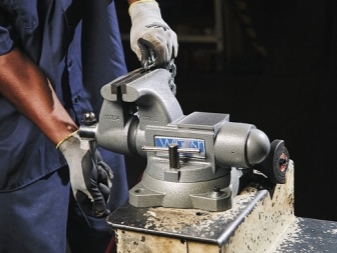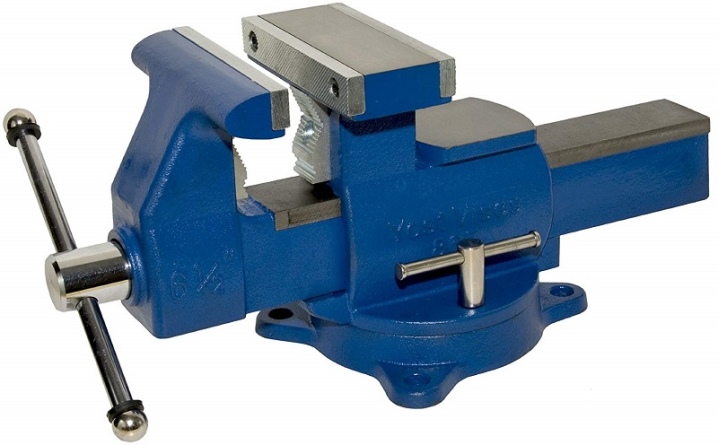All About the Wilton Vise

A vise is a device that is used to secure workpieces during drilling, planing or sawing. Like any other product, the vice is now presented in a large assortment, in which you can inadvertently get confused. It is always worth choosing only high-quality samples. And that's exactly what they are tools of the American brand Wilton, which will be discussed in our article.


Peculiarities
A vise is a tool that is made from wood or metal. It can be massive or not. It all depends on the destination. Frame includes a mechanism with flat feet and an adjustment handle that moves clamp screw... Thanks to the movement of the screw, the legs converge and open. Paws allow you to securely fix the product, which allows you to confidently work with the workpiece. One sponge located closer to the body of the vice and is stationary, the second moves along the guide using a screw. The feet have special overlays. Damage to the workpiece is excluded.
The peculiarity of the work consists in fastening the tool to the surface by tightening the screws. In order to unclench the legs and insert the workpiece, it is necessary to rotate the handle counterclockwise. The product is inserted between the planes and fixed by turning the screw clockwise.
When using more massive fixtures, the high clamping force must be taken into account. In this case, the part that the vice fixes may be deformed.


The tools of the American brand Wilton are distinguished by their quality and reliability. The vice is produced on the basis of high technologies and special developments. Wilton is considered the most popular and recognizable manufacturer not only in the states, but around the world. The company's products have sufficient strength and durability due to the use of high-quality materials and a cylindrical guide. All models are made on a swivel base. Fastening of parts is carried out not with the help of friction force, but thanks to the teeth.
The design of the Wilton vise body is considered to be unique. An insulated screw mechanism and a thrust ball bearing are the main design features. When working with such a tool, the force required when clamping the part is significantly reduced.
No backlash, parallelism of jaws, high precision cylindrical guide - all these are the main features of the manufacturer's vice.


Types and models
There are several types of vise.
- Locksmith's view is not equipped with soft parts and is attached to any surface. The device has the ability to rotate. This allows you to work with the part from different angles. Also, the device has a secure fit.
- The machine type of the vice has high accuracy. The devices are used in production. The type has a large clamping force and wide jaws, which makes it possible to work with rather massive workpieces.
- The hand vice is considered to be the most compact. The device acts as a fastener for small workpieces. The tool resembles a small clothespin and fits easily in your hand.
- Joiner's vice is used when working with wooden parts. The peculiarity of the device lies in the wide fixing jaws, which makes it possible to increase the compression area and ensures minimal damage to the parts during fixation.
- Screw devices have a threaded lead screw in the housing. The thread runs through the entire structure.The operation of the mechanism is carried out due to the rotation of the handle, which is located on its outer part.
- The cross view implies the movement of the workpiece in several directions horizontally.
- The drilling type of vice is used to fix workpieces on drilling machines.
Household vice for a workbench is also divided into series: "Combo", "Craftsman", "Workshop", "Mechanic", "Machinist", "Professional Series", "Universal", "Practician", "Hobby" and "Vacuum". All models differ in their purpose.



An overview of Wilton models should start with a plumbing fixture. Multi-Purpose 550P. Its characteristics:
- shockproof cast iron body;
- cylindrical guide and horizontal gripper axis;
- the possibility of fixing round products with a diameter of up to 57 mm;
- width of steel jaws - 140 mm;
- the vise is equipped with an anvil and a pivot function.

The model from the "Mechanic" series Wilton 748A has the following features:
- steel pipe clamp jaws;
- jaw width - 200 mm;
- sponge consumption - 200 mm;
- clamping depth - 115 mm;
- pipe clamp - 6.5–100 mm;
- square guide and complete insulation of the screw mechanism;
- high quality cast iron body.

Fixture from the "Workshop" series Wilton WS5:
- rectangular sectional guide;
- sponges made of steel are replaceable;
- jaw width - 125 mm;
- sponge consumption - 125 mm;
- clamping depth - 75 mm.

The Wilton 1780A vice from the Artisan series is considered universal and has the following characteristics:
- jaw width - 200 mm;
- sponge consumption - 175 mm;
- clamping depth - 120 mm;
- possibility of pipe clamping.

Model of the "Universal" series Wilton 4500:
- jaw width - 200 mm;
- consumption - 150/200 mm;
- the ability to install a moving part from the back of the case;
- is considered a unique model for its size and weight;
- high precision of the guide;
- durable and reliable model.

How to choose?
When choosing a tool, it is necessary decide on its purpose. This is necessary to select the optimum working width. In addition, the intended purpose also plays a large role in the choice. Locksmith vice used for clamping metal, carpentry tools are best used when working with wooden products.
For industrial production, a special tool is made, which implies fastening to the bed. One of the main criteria when choosing a vice is the presence of backlash. It is better to choose the tool that has no backlash. When buying, you should pay attention to the sponges. Their fastening must be reliable. The jaws can be fixed with fixing screws or rivets. The second option is considered more reliable, but excludes the convenient replacement of linings.
For comfortable work some models are equipped with additional pivot options, folding legs, clip pads. Moving parts are mounted to machine types of devices. It becomes possible to withdraw and bring the workpiece into the processing zone. Vices can be large and small. In this case, the choice is based on purpose.


If the fixture is mounted on a workbench, size and weight are irrelevant. With constant movement of the tool, choose a more compact model.
In the next video, you will find an overview of the Wilton Cross Vise.













The comment was sent successfully.